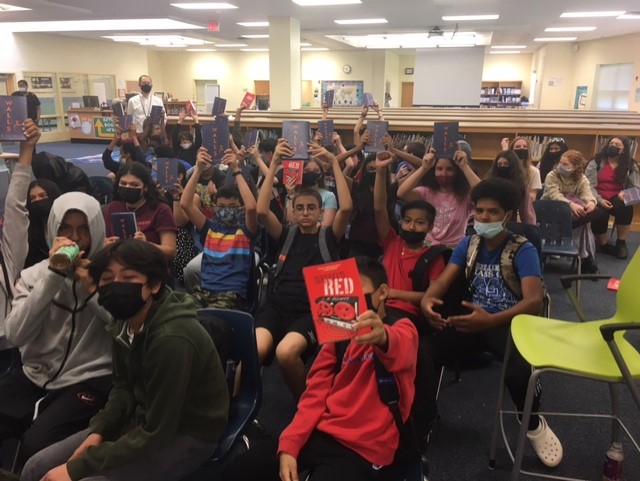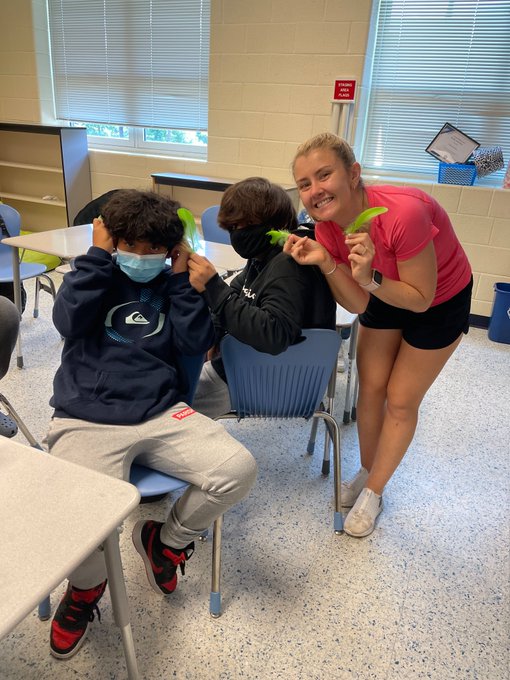
Laura's Blog

Cold War Echoes: How Disinformation Helped Build the Berlin Wall & Why Use the Past to Help Teens Understand Today
June 21, 2022

As a YA historical fiction author, I’ve often explored the destructive force of hate language and deceptive messages since, sadly, dupery seems an age-old weapon we use against one another. Today, once again, we are seeing disinformation’s terrible power, and it feels critically important to help teenagers—our next voters, next leaders, next parents and neighbors—learn to recognize deceits.
Witness the horrors Putin has unleashed on Ukraine, inculcating the Russian people to believe his brutal invasion is somehow a quest to “de-nazify,” that NATO threatens them. That the reported executions, abductions, or rape of civilians, and the purposeful starvation of trapped children are staged by the victims.
These lies seem ludicrous to us, and yet, think how many wild conspiracy theories are passed around and swallowed here.
Putin mastered disinformation tactics as a young KGB officer in East Germany, when a merciless wall cut Berlin in half and caged East Germany in Soviet Russia’s bloc of police-states. Meticulously crafted propaganda convinced many East Berliners the wall was for their own good—protection against a warmongering, expansion-greedy NATO. Sound familiar?
When our former president praised Putin in Helsinki and denigrated NATO, I wondered if Americans remembered the reasons NATO formed in 1949—Russia’s ruthless annexation of Eastern Europe after WWII, its Iron Curtain of oppression, and its blockade of Berlin.
Keeping to my readership, I asked teens if they knew what NATO was. Mostly, I received blank stares. About the Berlin Wall, I got: “Mmmm, it came down, didn’t it?” Little else.
I was a magazine journalist for twenty years before turning to historical and biographical fiction. I know a “hole in coverage” when I spot it. And that was a whopper.
So, I wrote WALLS and set it in 1960-61—the tense year leading to the Berlin Wall’s raising—because there is no more dramatic, heartrending, show-rather-than-tell story humanizing the Cold War’s politics and Russia’s longstanding antipathy for Western democracies than that cruel barricade. But I didn’t anticipate just how tragically relevant the history depicted in my docudrama novel would become.
Disinformation and Big Brother-style surveillance cowed many East Berliners into accepting the police-state unfurling 27 miles of barbed wire, without warning—literally overnight—cutting them off from free thought, family, and friends. Indoctrination started early: youth joined the Young Pioneers and then the FDJ (Free German Youth), attended paramilitary summer camps, and signed a pledge to fight to the death when told, which opened with this line: “Because of the threat of war by NATO. . ..” Teens were rewarded for reporting “unpatriotic” peers who tuned into Western radio broadcasts that drifted along the air into their sector, or who didn’t wave flags enthusiastically enough at official parades, or whose acne flare-up seemed to indicate “lazy hygiene” and “disrespect of workers’ dignity.”
State propaganda insisted anyone who dared escape to the West had not defected out of dissatisfaction but because they had been lured and then snared by capitalism’s “man-trade.” Or seduced by Western “culture-corrupting” promiscuity, like rock ’n roll or the Twist’s “wiggle hip.” Playing up Hitler’s persecution of German communists, Soviet Russia even managed to convince some East Germans that they had played no part in the Holocaust. That had been the evil of West Germans, influenced by France and Britain’s greed, sense of entitlement, and nationalistic arrogance.
Again, we shake our heads in disbelief. But when Putin rose to power in 2000, one dissident writer called him typical KGB: “If the snow is falling, they will calmly tell you the sun is shining.”
I’m often asked by former journalism colleagues why I gave up reporting current issues to tell teens stories about the past. Simple. History offers lessons. Well-researched and responsible historical/biographical fiction makes it palpable.
In story—which is how we humans have always found parable to make sense of ourselves—readers walk characters’ journey with them, with concern, with surprise, with tears and laughter. When we humans feel something, we remember it. Also, as a historical novelist, I’ve learned the power of presenting issues in a past era rather than present day—it removes the heat of immediacy, lowering readers’ defensive, self-protective guardrails, allowing easier revelations and more productive discussions. I’m certainly not the first to recognize this. Think about Arthur Miller’s The Crucible, which is canon literature in many American high schools. Miller set his play in the Salem Witch trials, yes, but as purposeful metaphor for McCarthyism and the Red Scare of his day.
And why write for teens? I love their righteous idealism, the fact they want truth—(and woe betide a writer who hands them pablum!)—but truth wrapped with some hope. A little reassurance that if people follow their moral compass, they can stand against injustice and make a difference.
Frankly, looking at the morass we adults have created—the unyielding, hate-filled tribalism, the avoidance of uncomfortable truths—my hope rests on our youth, their open hearts and instinct to question everything. But . . . if we want them to also find answers to their questions, we must gift them some historical context to aid their analysis of today, teach them how to look for fact, to think for themselves, and then respect it when they do.
To that end, I was thrilled by GMU’s Fall for the Book Lit Festival videotaping Breaking Down WALLS: Disinformation, Lies, & the Berlin Wall —a presentation (and accompanying guide) to develop classroom conversations around recognizing credible info, using a mash-up of the game 2 Truths & a Lie with NPR’s Wait Wait, Don’t Tell Me!
Also, I recently had the deeply rewarding experience of speaking (virtually) to a large Northern VA middle school for a two-week Cold War unit created by its amazing History and English teachers and wondrous librarian, Tara Sanz. Six hundred-plus students received and read copies of either WALLS or my McCarthy era novel Suspect Red. Both narratives are punctuated with a photo essay of factual news events, month by month, avoiding “info dumps” that interrupt a storyline but also allowing readers to see and assess primary documents (from 1960-61 and 1953-54) for themselves.
Using the novels’ posted lesson plans and discussion guides, teachers often added their own spontaneous interpretations. I loved hearing about one who divided her classroom by hanging sheets. Those in “the West” were granted individual expressiveness during an activity, while students in “the East” had to complete the same assignment following unyielding rules. Suddenly, a student made a bolt for the West under the sheet, while his “communist” compatriots tried to capture him and those in the West tried to help—prompting a visceral, microcosm “reenactment” of what living in Berlin was like.
Thanks to their school, those students were far better informed about the Cold War than many adults! The insights in the questions they asked me, their recognition of spin and manipulation in messages had everything to do with their guided study and experiencing in story—one featuring teen characters like them—the catastrophic effects of propaganda and smear campaigns on individual lives.
When I spoke to the classes, I worked backwards from 1961, starting with that horrifying overnight raising of the Berlin Wall, and ending with that “reassurance” I mentioned a few graphs back. Facts that showed human resilience—if people had the courage to stand up to lies and reject mob mentality. We can all take heart from 1954’s “Green Feather Movement,” begun by five, politically moderate Indiana University students in protest of McCarthy-era bans of Robin Hood. Yes, Robin Hood! He took from the rich and gave to the poor—a theme deemed subversive, Red-leaning, and encouraging lawlessness. Librarians refusing to remove the classic might lose their jobs after being targeted by character-assassinating community watchdog groups, hell-bent on censoring books that might “corrupt youth” and anyone who “peddled in them.” Again, sound familiar? Both in Berlin and now?
The coeds dyed feathers green and handed them out as witty commentary, spawning nationwide “Merry Men Marches” against the book banning fanned by Senator McCarthy’s fearmongering rhetoric.
Those 1950s young adults thought for themselves. We need to help more do the same today. For themselves and for the future world they’ll help create.

Educators interested in more details from Librarian Tara Sanz can contact me at laura@lmelliott.com and I will connect you.

Other Blog Posts
Click Here to See All of Laura's Blog Posts
